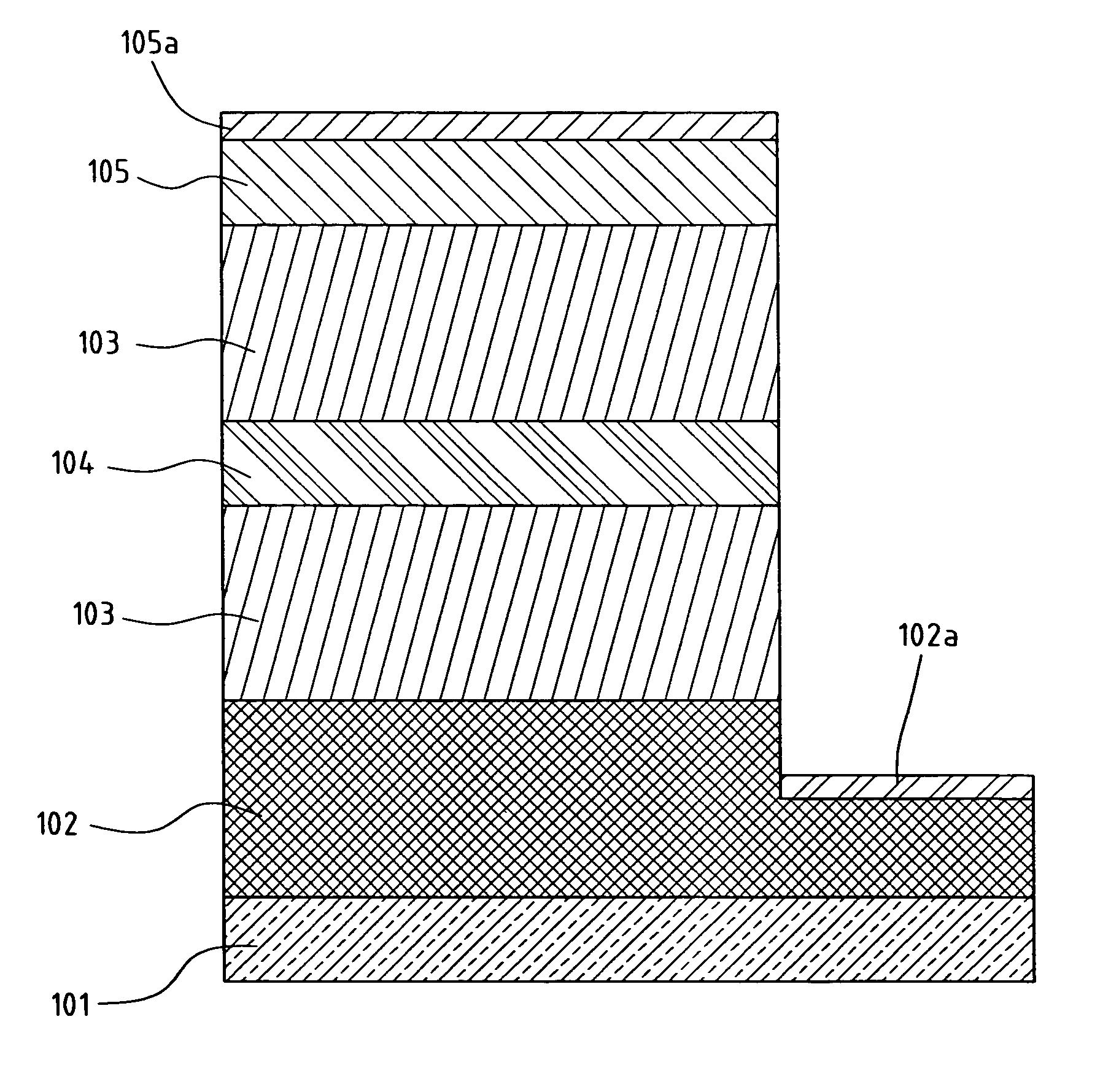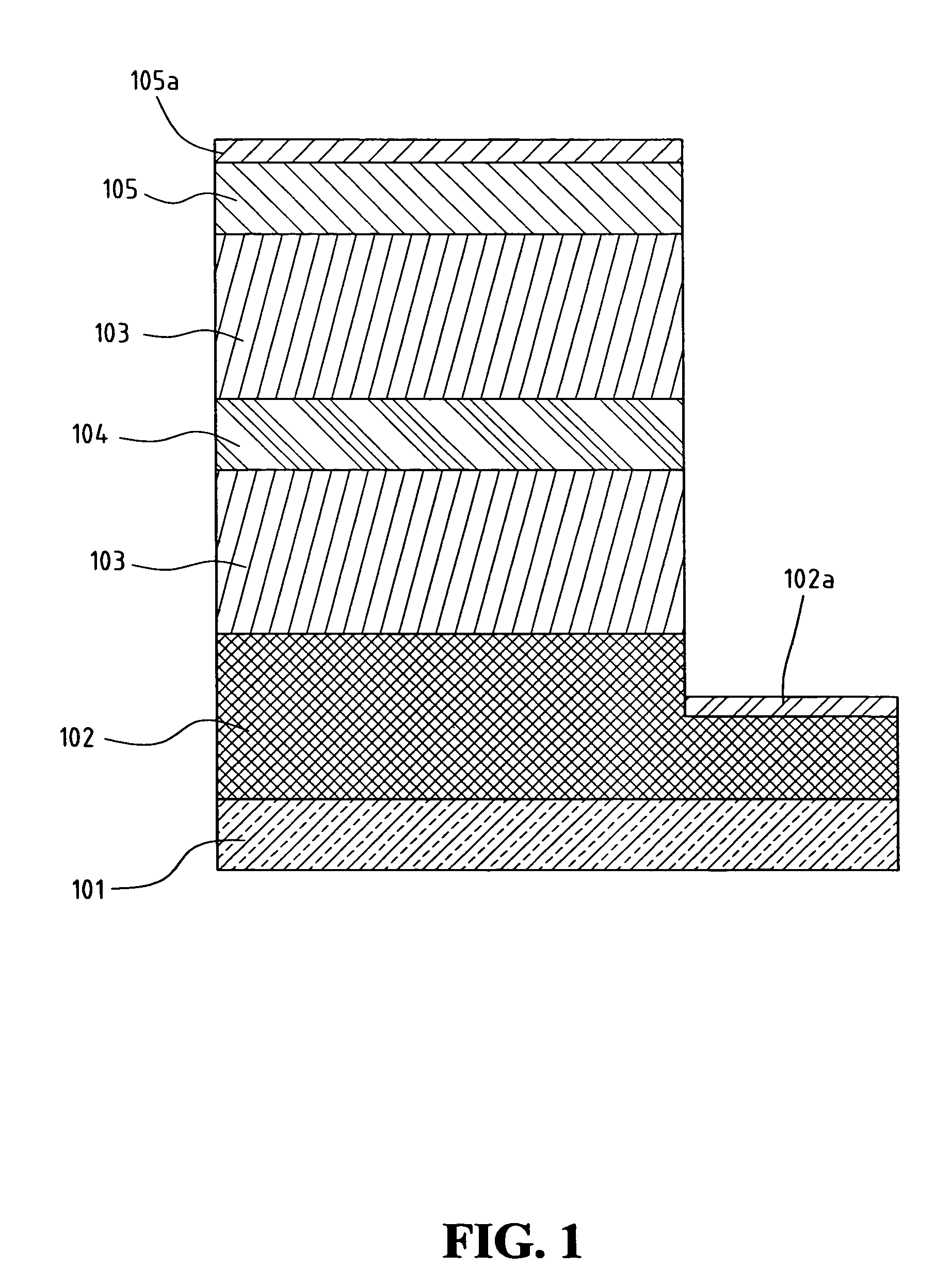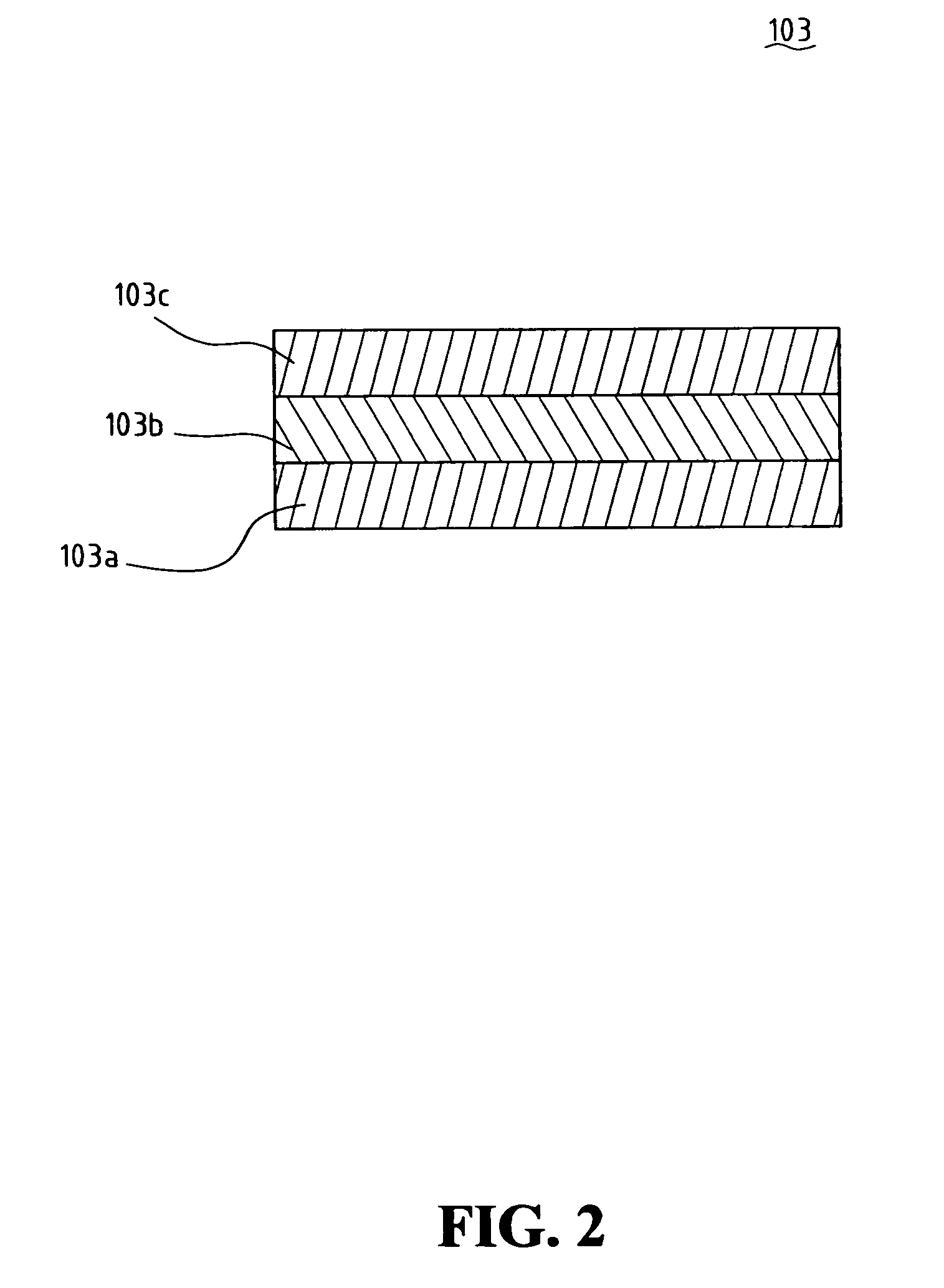Gallium-nitride based light-emitting diode epitaxial structure
a light-emitting diode and gallium-nitride technology, applied in the field of epitaxial structure of gallium-nitride-based light-emitting diodes, can solve the problems of gan-based led having inferior device characteristics, reducing the external quantum efficiency of gan-based led, and si-doped barrier layers also have side effects
- Summary
- Abstract
- Description
- Claims
- Application Information
AI Technical Summary
Benefits of technology
Problems solved by technology
Method used
Image
Examples
first embodiment
[0015]FIG. 1 is a schematic diagram showing the epitaxial structure of the GaN-based LED according to present invention. On the other hand, the inner structure of the barrier layer within the epitaxial structure is depicted in FIG. 2.
[0016]As shown in FIG. 1, the GaN-based LED is formed by stacking a n-type contact layer 102, a lower barrier layer 103, an active layer 104, an upper barrier layer 103, a p-type contact layer 105, sequentially in this order from bottom to top on an upper side of a substrate 101.
[0017]The substrate 101 is made of C-plane, R-plane, or A-plane aluminum-oxide monocrystalline (or sapphire), or an oxide monocrystalline having a lattice constant compatible with that of nitrides. The substrate 101 can also be made of SiC (6H—SiC or 4H—SiC), Si, ZnO, GaAs, or MgAl2O4. Generally, the most common material used for the substrate 101 is sapphire or SiC. On an upper side of the substrate 101, an n-type contact layer 102 is formed and made of an n-type GaN material. ...
second embodiment
[0024]FIG. 4 is a schematic diagram showing the epitaxial structure of the GaN-based LED according to present invention.
[0025]As shown in FIG. 4, the GaN-based LED contains a substrate 101, a n-type contact layer 102, multiple barrier layers 103 and multiple active layers 104 alternately stacked upon each other from bottom to top with a barrier layer 103 at the bottom and an active layer 104 at the top, another barrier layer 103 on top of the topmost active layer 104, and a p-type contact layer 105, sequentially stacked in this order. The substrate 101, the n-type contact layer 102, the barrier layer 103, the active layer 104, and the p-type contact layer 105 are all formed in processes identical to those of the first embodiment.
[0026]Please be noted that each of the AlGaInN layers 103a and 103c within the barrier layers 103 has a wider band gap than that of the active layer 104.
[0027]Each of the barrier layers 103 within the second embodiment of the present invention as depicted in...
PUM
 Login to View More
Login to View More Abstract
Description
Claims
Application Information
 Login to View More
Login to View More - R&D
- Intellectual Property
- Life Sciences
- Materials
- Tech Scout
- Unparalleled Data Quality
- Higher Quality Content
- 60% Fewer Hallucinations
Browse by: Latest US Patents, China's latest patents, Technical Efficacy Thesaurus, Application Domain, Technology Topic, Popular Technical Reports.
© 2025 PatSnap. All rights reserved.Legal|Privacy policy|Modern Slavery Act Transparency Statement|Sitemap|About US| Contact US: help@patsnap.com



